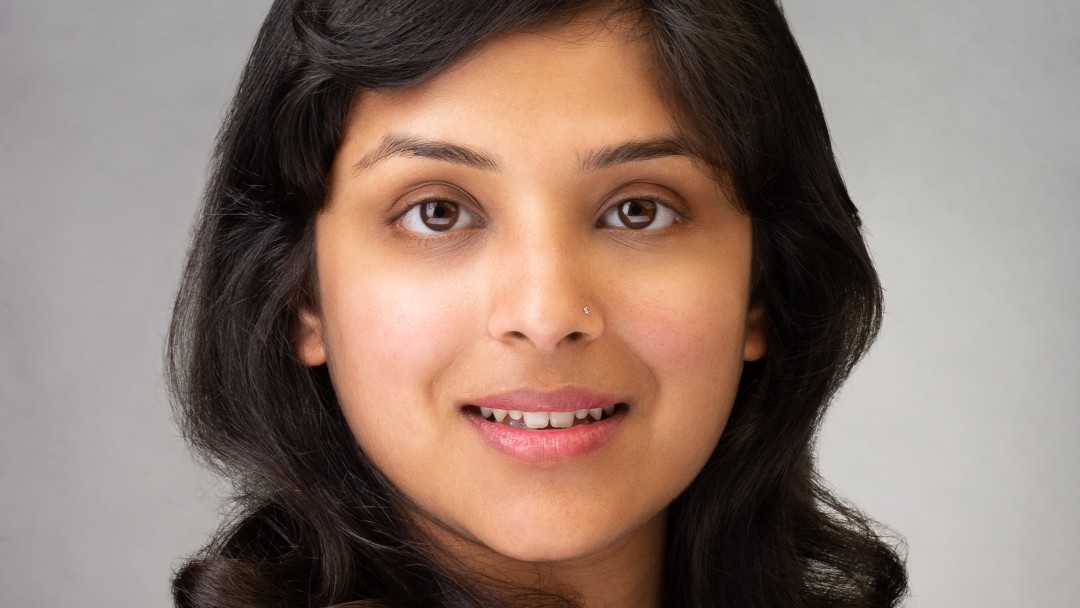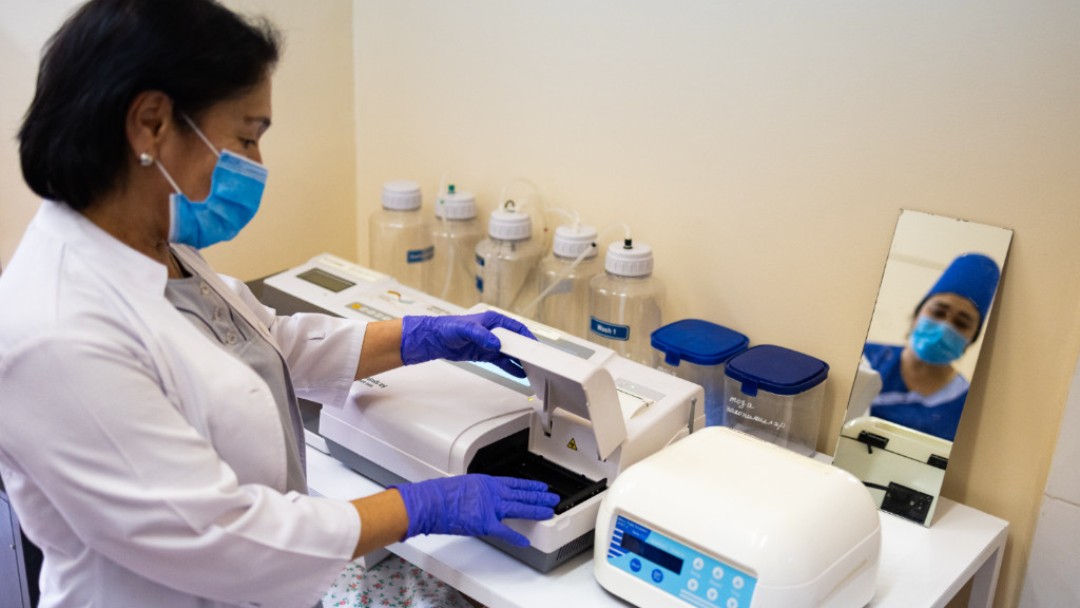Interview with Kusum Kali Pal
“The economic evidence is compelling”Kusum Kali Pal, Lead for Women´s Health at the World Economic Forum (WEF), explains in an interview with Friederike Bauer why investing in women’s health and well-being makes good economic sense.

Women’s health encompasses more than just reproductive health, although that’s often where the conversation starts. It’s about the full spectrum of women’s physical and mental well-being throughout their entire life cycle. While there are conditions that affect both men and women, some are exclusively women-specific, including maternal and gynaecological conditions. Some conditions disproportionately impact women, like headache disorders, autoimmune diseases, and depression. Certain conditions, such as atrial fibrillation, colon cancer, etc. affect women differently than men. Understanding these distinctions is crucial for addressing gaps in research and healthcare delivery. In short, women’s health is broader and more complex than commonly perceived and requires tailored care and treatment.
The neglect stems from both historical and structural factors. For many years, women were excluded from clinical trials, especially those of reproductive age, meaning that medical research primarily focused on male physiology. This set the stage for a male-centric healthcare model where needs were not fully understood or prioritised. They were often treated as “smaller men,” with inadequate consideration for the critical biological differences. Moreover, women’s health conditions have been under-researched and underfunded, more so in developing countries contexts. In a recent study by the World Economic Forum and the McKinsey Health Institute, we found that conditions like premenstrual syndrome, menopause, maternal health issues, cervical cancer, and endometriosis account for 14% of the women’s health gaps in terms of impact from premature death and years lived with illness or disability. However, they receive less than 1% of research funding for conditions driving the women’s health gaps. The economic structures supporting healthcare and medical research have also been slow to acknowledge the long-term benefits of investing in women’s health. As a result, many women suffer from undiagnosed, untreated or poorly managed health conditions simply because they’ve been overlooked in research, policy and practice.
The first step is to recognise that women’s health is not a niche issue – it’s a global challenge with profound economic and societal implications. To ensure prioritisation, we need to do several things. First, we must improve data collection. For too long, the lack of disaggregated data on women’s health has meant that we don’t fully understand the extent of the issues. For example, only 10% of clinical trials for ischaemic heart disease and migraine report sex-specific data. Platforms like the Women’s Health Impact Tracking (WHIT), developed by the World Economic Forum in collaboration with the McKinsey Health Institute, are crucial because they provide evidence of the gaps across data, care delivery and efficacy of treatments needed to inform policymakers and decisionmakers in resource allocation. This data is essential for building the economic case for investing in women’s health.

It is important to fund research adequately. There's a major mismatch in funding for women's health conditions in comparison to the disease burden they drive. Furthermore, breaking down funding by category – such as basic science research, clinical trials, translational research, and implementation science – helps pinpoint areas where investment is most needed. There are also stark regional disparities. From our study, we found that although low- and middle-income countries bear 54% of the women’s health gaps in terms of impact on premature death and illness or disability, only 23% of clinical trials for nine key women’s health conditions we studied, focus on these regions. Addressing these differences is about more than just equity; it’s about improving the precision of healthcare for everyone. We can’t continue to rely on one-size-fits-all treatments when the biology is so fundamentally different.
Absolutely. Delivering quality care requires a coordinated, multisectoral approach involving policymakers, healthcare providers, insurance providers, pharmaceutical companies, diagnostic companies, communities, and civil society organisations. Recognising the ecosystems that women live in, it is important to ensure that women are not only enabled to access care in a timely manner, but it is also made available to them in a respectful and effective manner – that they can be partners in this process.
Maternal health indicators are a litmus test for health system performance. While maternal mortality ratios have declined by 34% globally between 2000 and 2024, an estimated 800 women still die every day due to pregnancy or childbirth. Achieving sustainable progress in maternal health requires a multi-pronged approach that strengthens health systems, expands access to quality care, and addresses underlying social determinants. This includes investing in skilled healthcare workers, ensuring access to essential maternal care services — from prenatal to postnatal care — and harnessing technology for early detection and intervention. Equally vital is fostering public-private partnerships to scale proven solutions and financing, particularly in low-resource settings. 94% of maternal deaths occur in low- and middle-income countries, underscoring the urgent need for better governance, targeted investments and policy action.

Investing in women’s health is not just a moral or social imperative – the economic evidence is also compelling. Research by the World Economic Forum and McKinsey Health Institute shows that women, on average, spend 25 percent more of their lives in poor health compared to men. This gap in health outcomes significantly hampers their ability to participate fully in the community and in the workforce which affects their economic opportunities. On the contrary, we found that if we enable women to live healthier and high-quality lives and invest in their health, that has ripple effects on their education, workforce participation and productivity. Plus, it, generates intergenerational benefits. This can collectively drive an economic growth of at least 1 trillion dollars annually by 2040. That’s a huge economic opportunity and important to reach the SDGs.
The cost of inaction is immense. For example, every two minutes, a woman dies due to pregnancy or childbirth – these aren't just statistics; they represent real lives, families, and communities deeply affected by loss. Women's health is directly linked to their ability to work, contribute to their communities, and lead fulfilling lives. Poor health leads to higher healthcare costs, increased absenteeism, and reduced productivity. As a result, families lose income, businesses lose productivity, and individuals and governments bear the cost of healthcare.
The private sector is a key player in transforming healthcare for women, bringing innovation, financing, and expertise to the table. From pharmaceutical companies to private healthcare providers, insurers, employers – these actors help expand access to quality care, improve, and drive innovation and efficiency. Public-private partnerships (PPP), collaborations with civil society, and product development partnerships (PDP) have already made a big impact, from advancing vaccines to improving essential medicine access. Civil society organisations often act as critical bridges, ensuring these efforts are community-driven, equitable, and accountable. But for these collaborations to truly work, they need strong stewardship, management, and real accountability. When done right, private sector engagement, alongside civil society, can be a game-changer in tackling global health challenges and making healthcare more effective for everyone.
Closing the women’s health gap would be transformative. It will mean a healthier, more prosperous and productive world for everyone. This would lead to significant economic benefits across developed and developing countries. But most importantly, addressing women’s health would create a more equitable world, where women can thrive, both personally and professionally.
Share page
To share the content of this page with your network, click on one of the icons below.
Note on data protection: When you share content, your personal data is transferred to the selected network.
Data protection
Alternatively, you can also copy the short link: https://www.kfw-entwicklungsbank.de/s/enzB5M_Q
Copy link Link copied